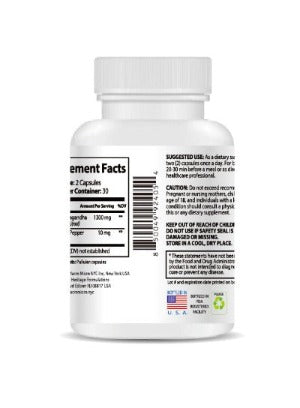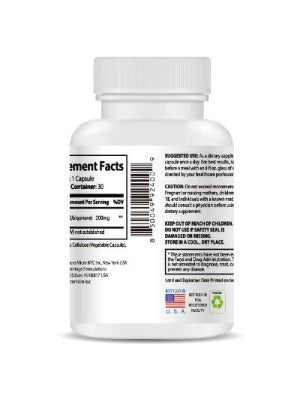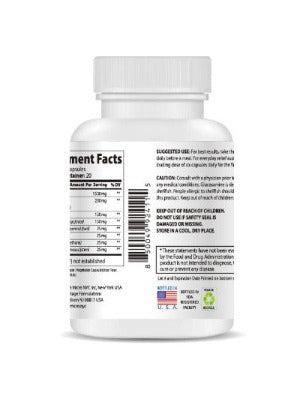Are your contact lenses and digital life a match made in discomfort? If you spend hours a day at your computer, on your phone, or gaming while wearing contacts, you've probably felt that tell-tale sting, grittiness, or blurriness. You're not alone. This frustrating combination of daily habits puts you at a higher risk for dry eye, a condition that goes beyond simple irritation. But it doesn't have to be this way. By understanding the link between contacts and screens, you can take proactive steps to protect your vision and keep your eyes comfortable.
The Two-Fold Problem: Contacts & Screens
To understand why this combination is so problematic, we need to look at how each factor affects your eyes.
First, there's contact lens wear. A contact lens sits directly on your cornea, separating it from the front layer of your tear film. This can disrupt the natural flow and balance of your tears. Over time, some contact lens wearers may find their eyes produce less of the crucial oil that prevents tears from evaporating, making their eyes feel dry and gritty.
Second, there's digital screen time. When we focus on a screen, we tend to blink far less frequently and less completely. A normal blink is a full, deliberate closure of the eyelids that helps spread fresh tears across the eye and stimulates the oil glands along the eyelid margin. Screen time leads to shallow, incomplete blinks, which starve your eyes of moisture and prevent those oil glands from working correctly.
When you combine the two, you get a perfect storm. The lens itself can disrupt your tear film, and the reduced, poor-quality blinking from screen use compounds the problem, leading to chronic discomfort and even potential damage to the eye's surface over time.
5 Essential Tips for Contact Lens Users with Long Screen Time
Taking a proactive approach can make a huge difference. Here are five practical tips to help you find relief and maintain the health of your eyes.
1. Give Your Eyes a Digital and Physical Break
The single most effective thing you can do is to interrupt the cycle. You need to give your eyes a rest from both the screen and the contacts.
-
Follow the 20-20-20 Rule: Every 20 minutes, look at something 20 feet away for at least 20 seconds. This simple act forces your eye muscles to relax and helps encourage a more natural blink pattern.
-
Schedule Screen Breaks: Set a timer to remind yourself to step away from the screen completely. Use these breaks to stretch, walk around, or simply look out a window.
-
Go Contact-Free: Whenever possible, give your eyes a break from contact lenses. Wear your glasses at home after work, on weekends, or during your days off. This allows your cornea to breathe and your natural tear film to replenish without a lens getting in the way.
2. Master the Art of the Conscious Blink
You may not realize it, but those long, focused screen sessions can lead to what's known as "screen-induced incomplete blinking." Make a deliberate effort to blink fully and frequently.
-
Practice Full Blinking: Every so often, remind yourself to close your eyes completely, almost like a strong, slow squeeze. This action helps to express the oil from your eyelid glands and spread tears evenly across your eyes.
-
Set Reminders: You can use a blinking app or simply set a mental reminder every few minutes to consciously blink several times in a row.
3. Optimize Your Environment
Your surroundings can have a major impact on your eyes' comfort.
-
Humidify Your Space: Dry air—from heating in the winter or air conditioning in the summer—can accelerate tear evaporation. Using a humidifier in your home or office can add moisture back into the air, helping your tear film stay intact longer.
-
Mind the Air Flow: Avoid positioning yourself directly in front of fans, air vents, or car heaters, as a constant blast of air can quickly dry out your eyes.
4. Stay Hydrated and Eat for Eye Health
What you put into your body plays a significant role in your eye health.
-
Drink Plenty of Water: Dehydration affects your entire body, including your tear production. Staying well-hydrated is a simple but effective way to support your tear volume.
-
Fuel Your Eyes: Include foods rich in Omega-3 fatty acids in your diet, such as salmon, tuna, flaxseed, and walnuts. Omega-3s can help support healthy tear production and have anti-inflammatory benefits that are crucial for managing dry eye symptoms.
5. Consult with an Eye Care Professional
This is perhaps the most important tip. If you're experiencing persistent dry eye symptoms, don't try to manage them alone. An eye care professional can provide an accurate diagnosis and recommend a personalized plan.
-
Get a Dry Eye Exam: A specialized exam can help determine the root cause of your discomfort, whether it's related to your contact lenses, gland dysfunction, or another issue.
-
Discuss Your Habits: Be open with your doctor about your lifestyle, including your screen time and contact lens habits. They can provide tailored advice, suggest different types of contact lenses designed for dry eyes, or recommend specific strategies to help you find lasting relief.
By taking these steps, you can break the frustrating cycle of discomfort and ensure your eyes stay healthy and comfortable, even in today's screen-centric world.
Q&A for Eye Discomfort
Here are five questions and answers to help you navigate your eye discomfort and find lasting solutions.
Q1: My eyes feel fine in the morning, but they get worse as the day goes on. Why is that? A1: This is a very common pattern for contact lens wearers with digital eye strain. Your eyes have had a full night to rest and recover. As the day progresses, continuous screen use and contact lens wear deplete your tear film, leading to increasing dryness and discomfort. This is a clear signal that your eyes are struggling to keep up with the demands of your day.
Q2: Is it okay to use rewetting drops for my contact lenses? A2: Yes, but be sure to use drops specifically formulated for contact lens wearers. Using standard eye drops while wearing contacts can cause damage to the lens or trap ingredients against the eye. Always read the label carefully and, when in doubt, consult your eye care professional for a recommendation.
Q3: I've heard that different types of contact lenses can help with dry eye. Is that true? A3: Yes. There are many types of contact lenses available today, including daily disposables and lenses made from materials designed to retain more moisture. Your eye care professional can assess your specific needs and recommend a lens type that may be more comfortable for you.
Q4: Should I worry if my vision gets a little blurry at the end of the day? A4: Blurry vision that clears up with a blink or a moment of rest is a classic symptom of dry eye. The dry patches on your cornea can distort light, leading to temporary blurriness. It's a sign that your tear film is no longer smooth and stable, and it's a good indicator that you need to give your eyes a break.
Q5: How can I tell if my dry eye is caused by my contacts or just screen time? A5: It can be difficult to separate the two, as they often work together to cause the problem. A simple test is to wear your glasses for an entire day while still using a screen as you normally would. If your symptoms are significantly better, your contact lenses are likely a major contributor. However, if symptoms persist, it's more likely a combination of factors, including screen time, that needs to be addressed.









